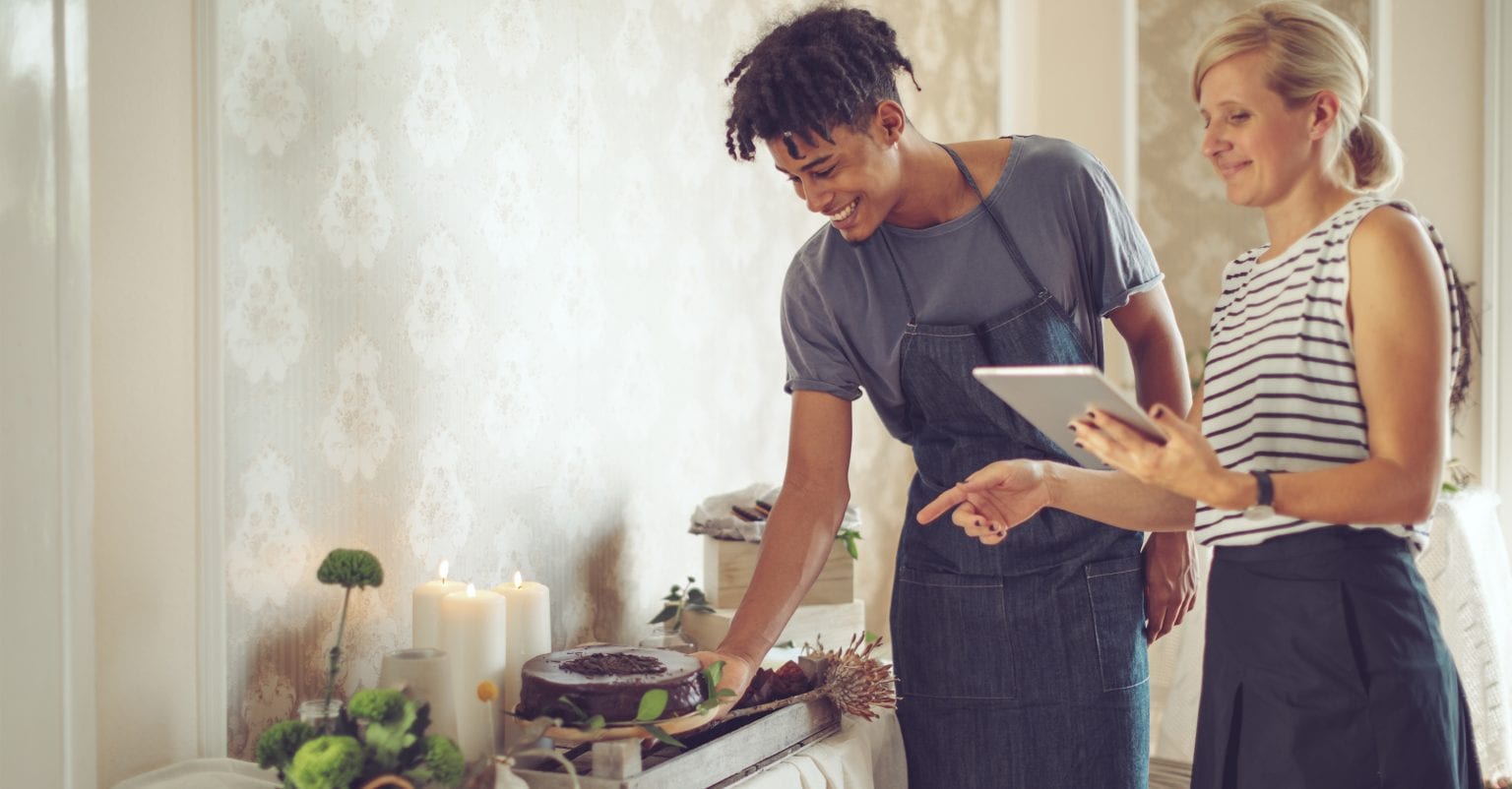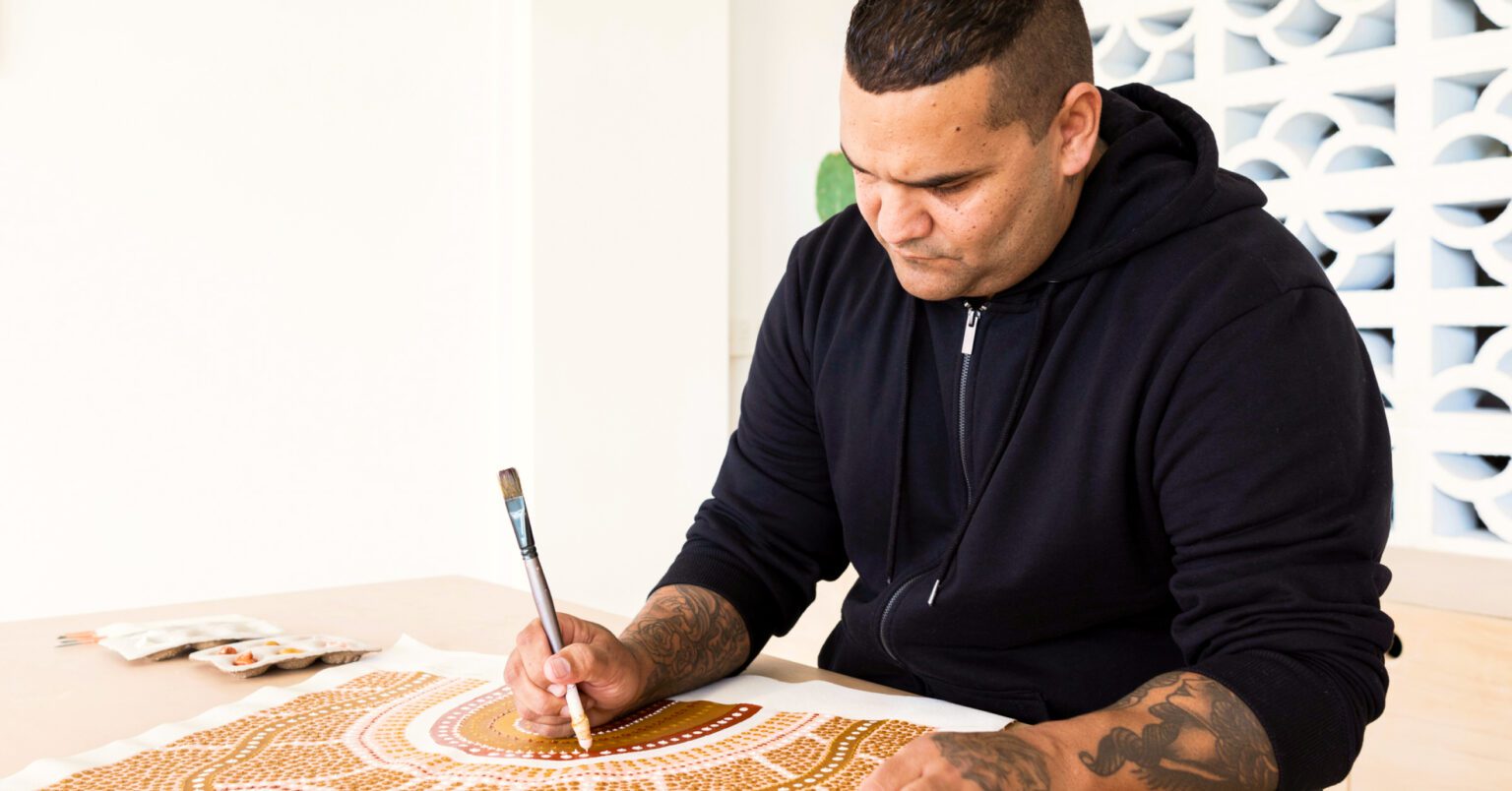If you’re looking for new ways to supercharge your small business growth, it could be time to consider partnerships and collaborations with complementary businesses. Two small business owners share insights into their experience of partnering over the pandemic and their tips for collaborating like a pro.
At a glance
Here’s a snapshot of the advice from our interviewees:
- Have a mindset of ‘what’s in it for them’ not ‘what’s in it for me’.
- The partnership doesn’t have to be about sales. Leverage currencies other than cash.
- Align with people and companies whose values you share.
- Be very clear about your goals and partnership objectives.
Why is everyone talking about collaboration?
“It’s no surprise that brand partnerships and collaborations have seen a spike as businesses look for new ways of strategically reaching and engaging customers, without breaking the bank,” says Jess Ruhfus, founder of brand matchmaker, Collabosaurus. “Brand collaborations can be up to 25 per cent less expensive than digital advertising.”
Small businesses collaborations and partnerships are set to continue the upward trend in 2021. And that’s not just a result of that ability to shave a quarter off the digital marketing budget.
“Brand collaborations allow businesses to leverage currencies other than cash,” says Jess. “From your products and services, your expertise and skill set, content creation and multi-channel reach. Think creating new revenue streams, building email lists and establishing credibility. So get creative and explore collaborations that help you grow holistically (not just on Instagram).”
Here are two small businesses that did exactly that.
Jasmine Designs x GoCardless
 Jasmine Holmes’s collaboration with GoCardless was responsible for 20% of Jasmine Designs’ revenue last year.
Jasmine Holmes’s collaboration with GoCardless was responsible for 20% of Jasmine Designs’ revenue last year.
Collaborating to connect
“I was pulling up outside the site where I was to start working on a large installation when I got the call,” recalls designer Jasmine Holmes. “The client was closing its doors. Everything was on hold indefinitely.”
It was March 2020 and Jasmine Designs had come off a huge month in February, with a variety of design projects in the pipeline, including murals and installations. Then the pandemic hit.
“There were two responses,” she remembers. “Clients either shut everything down and all commissions were off the table, or they decided to use the opportunity to get a bulk lot of work done in preparation for the future. It obviously depended a lot on what kind of work they did – anything involving people being in other venues was definitely over.”
Fortunately, one of the clients keen to keep forging ahead was GoCardless. When Marketing Manager Emily Shurey came to Jasmine with the suggestion of creating a Working from Home Kit, the timing was perfect to explore a different kind of direct marketing campaign to suit such extraordinary circumstances.
“Connection was always at the heart of the campaign, not sales,” says Jasmine. “It was about letting people know they weren’t alone and that we were all in this together.”
A light touch and some late nights
The kits needed to be turned around fast. From design approval to execution took about three weeks and Jasmine got the website up and running in under 48 hours.
“You just do the thing you have to do to make it happen,” says Jasmine, remembering the days of her house being packed with stock as she and her partner prepared the boxes in front of the television at night.
“These kits were going into people’s homes,” says Jasmine. “They had to feel authentic and substantial – not just a throwaway gift. And we wanted to source local providers as much as possible to give it a homegrown feel.”
A little well-placed humour was also key. Think a pair of track pants labeled ‘Video conferencing uniform’, a goal planner for ‘keeping on track between Netflix episodes’, a canister of Mork hot chocolate labeled ‘fuel for the soul’ and Bureaux Collective coffee labeled ‘fuel for the mind’.
“An Audible gift voucher with a book recommendation for ‘The Year Without Pants’ tied in cheekily with the tracksuit,” says Jasmine. “And a handwritten note gave it that all-important personalised feel. “
“The aim was to help, not to sell,” says Jasmine. “We’d only planned it as a limited run of 50. But it was so successful that GoCardless made a repeat order.”
Benefits and tips
“The project opened up an understanding of what my capabilities are for the client, and Emily and I became the go-to team for creating impactful, authentic, direct marketing campaigns that connected,” says Jasmine.
“The kits generated a good 20 per cent of my revenue in the past year as well as generating opportunities with new clients and showing existing clients what was possible. With GoCardless alone, I’ve done three more direct marketing campaigns including their Christmas kits and, when satisfied clients have sent positive feedback to GoCardless, they’ve been able to share my details.”
Jasmine’s top tips for a successful collaboration
- Assume that everyone is trying their best. This immediately alleviates any resentment or frustration. If you’re in it with someone whose values align with yours, then you’re fundamentally on the same page.
- Make the collaboration about helping someone, not selling something. It should be about creating connection.
Aromababy x Qiara
 Catherine Cervasio had big plans for her Aromababy brand in 2020.
Catherine Cervasio had big plans for her Aromababy brand in 2020.
Dig deep and think creatively
After 25 years in business, Aromababy founder Catherine Cervasio had planned to spend 2020 travelling abroad to take advantage of new opportunities for her natural skincare brand for mothers and babies, and boost her exports.
“We’d planned to launch several new products, and we did,” says Catherine. “Just not the ones we expected.”
A range of stylish face masks and a hand sanitiser were just two of the unexpected products that came out of 2020. But more was needed to survive the year and that’s where collaboration came in.
“I reached out to several Victorian-based businesses including Qiara, which produces an award-winning, Australian-made pregnancy and breastfeeding probiotic among other things,” says Catherine. “We share the same target audience, have non-competing product ranges and have known each other for some time, which meant there was a strong element of trust already in place.”
Square pegs and collaboration etiquette
“You can’t fit a square peg into a round hole,” says Catherine. “What you’re looking for in a strong partnership is ideally that ‘match made in heaven’. But something that comes close may work just as well. A good fit across brand values and alignment ensures minimal wastage for both parties and a real likelihood of being able to offer each other something of actual value.”
Catherine describes the unspoken etiquette involved in nailing a successful collaboration.
“There’s no value in us partnering with two different cloth nappy companies, for example, or three different pregnancy tea brands. It’s best to stick to what works well and build on those relationships. We work with brands and people we love.”
Tips and benefits
“We shared leads, promoted each other’s products via our own direct-to-consumer sales and supported each other across social media,” explains Catherine. “Other outcomes included securing new stockists (leading to increased revenue), forming relationships with industry bodies and health professionals (boosting our credibility) and improving marketing efforts by sharing influencer or brand ambassador recommendations.”
“We’ve been in business for 25 years and many new mothers may never have heard of Aromababy. I love that by collaborating we have been able to keep our brand relevant and in front of new people and new decision-makers.”
Catherine’s top tips for a successful collaboration
- Go into a partnership with a mindset of what’s in it for them, not for you. Be really sure you have ideas around how you can add value to another business.
- Consider developing longer-term relationships. Our customers come to know that we align with quality products and are interested in what we’re offering – this adds value to the partners we collaborate with.
- A variety of partner brands across different categories means you can rotate them, keeping your offering fresh and buyer interest alive.
- Make it an equal exchange and have something to trade. Maybe they have more retail touch points but you’re a social media star.
Have a collaborative project you want to get up and running? Have a chat to one of our small business lending specialists about how a Prospa Line of Credit could help you get the ball rolling.








